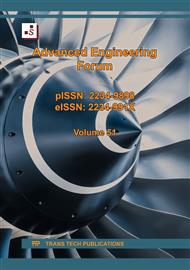p.1
p.9
p.19
p.27
p.37
p.49
p.61
p.75
Innovative Engineering Solutions for Short Neutral Section Maintenance Reduction in Railway Overhead Lines
Abstract:
This work addresses the challenges associated with the development of short neutral sections (SNS) for overhead lines of high-speed moving trains. A crucial function of a short neutral section is to provide electrical isolation between the different phases of AC traction. These sections are typically located in proximity to the traction substation and sectioning posts. The current SNS design presents several issues, including pantograph arcing, wear and tear of the overhead line system, and the need for manual rotation during periodic maintenance. To address these challenges TRIZ is used, a problem-solving methodology that leverages inventive principles to generate innovative solutions. The work outlines the use of several TRIZ tools and techniques, including the Interaction Matrix, Functional Analysis, Function-Body Diagram (FBD), Trimming, and the Contradiction Matrix [1]. With the application of these tools, the author presents several potential solutions for improving the SNS design to eliminate periodic maintenance and services. One proposed solution involves the use of a segmented overhead line system with an insulating cylinder-shaped discrete insulator to ensure smooth contact of the pantograph. Another solution involves the use of a twisted strip-based insulator to replace linear motion with rotating movement, eliminating the need for manual rotation. The work emphasizes the importance of considering various factors, such as design, material, wear rate, maintenance, and creepage distance, when evaluating the feasibility of these solutions. By leveraging TRIZ to generate innovative solutions, the author demonstrates the potential of this methodology to drive innovation and overcome complex challenges in the development of short neutral sections for high-speed rails.
Info:
Periodical:
Pages:
61-74
Citation:
Online since:
January 2024
Authors:
Price:
Сopyright:
© 2024 Trans Tech Publications Ltd. All Rights Reserved
Share:
Citation:


